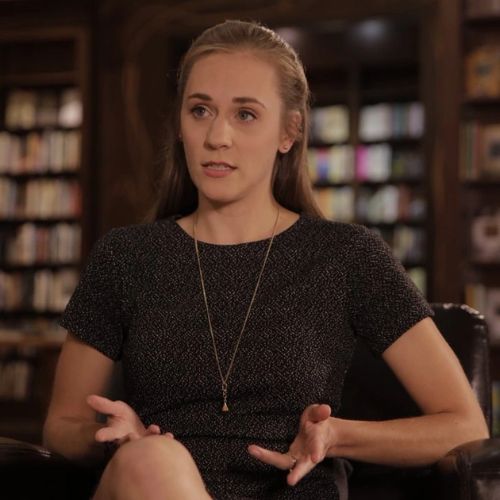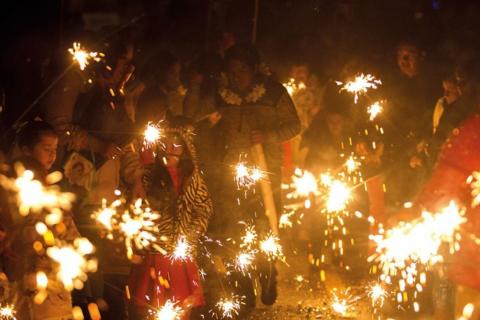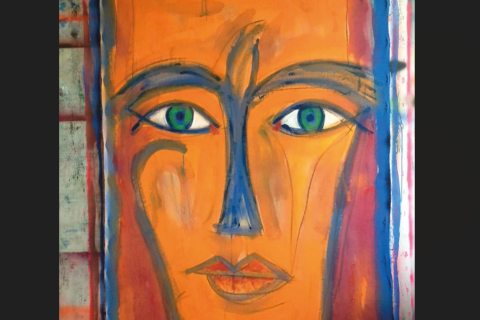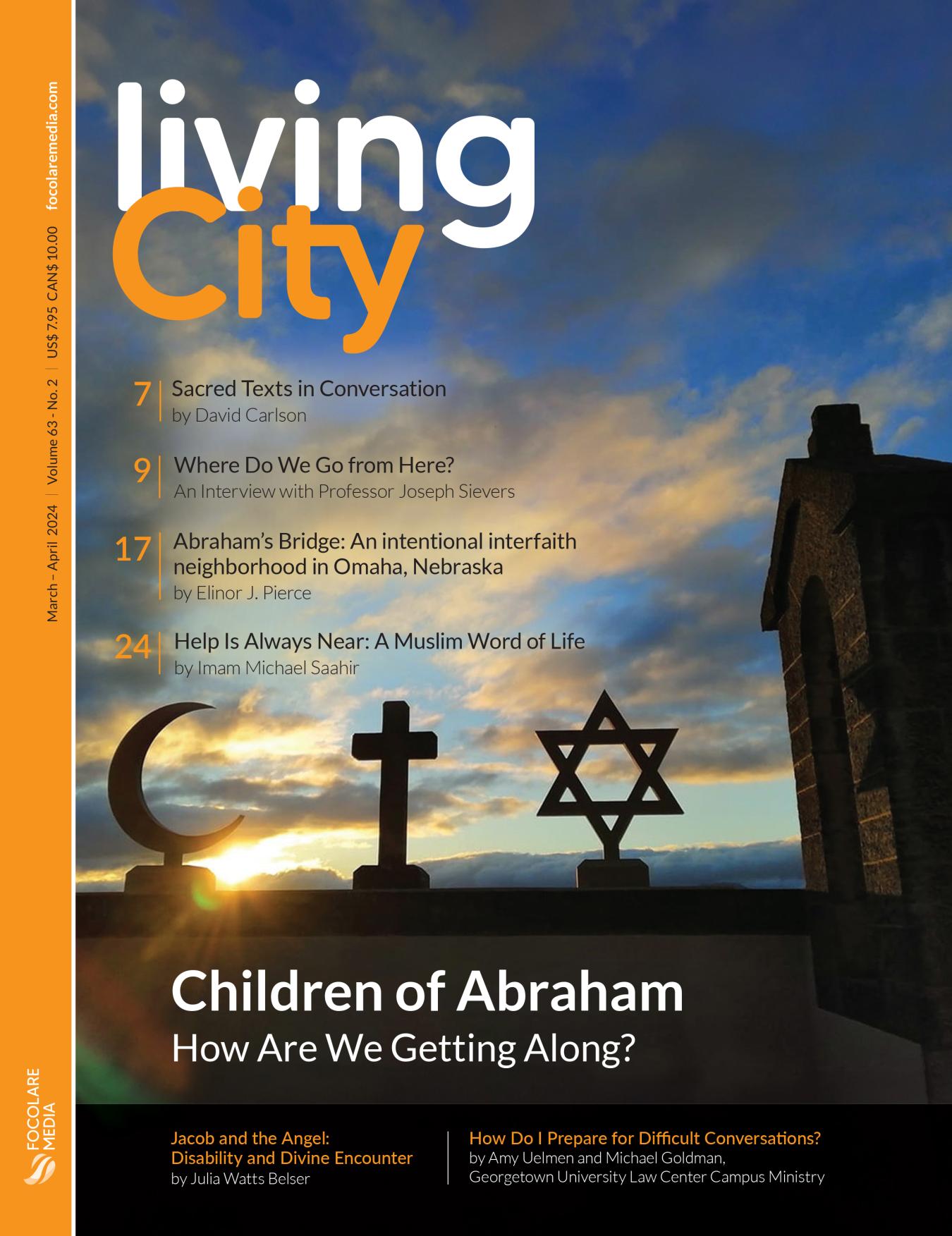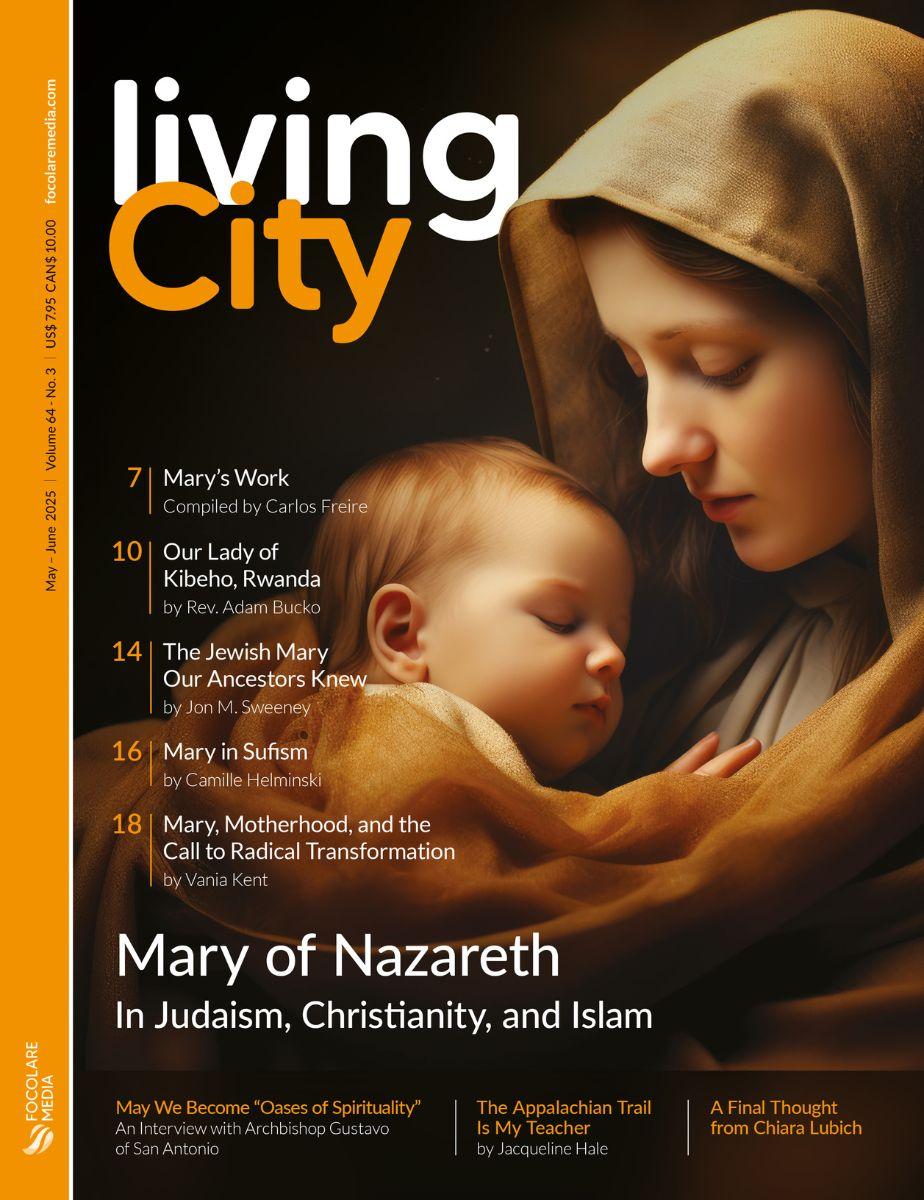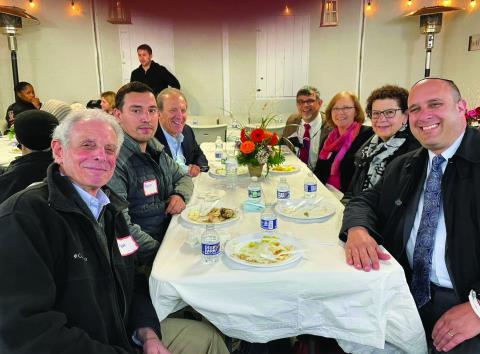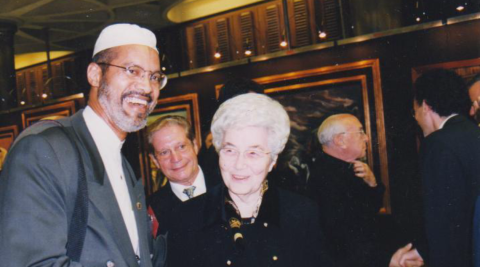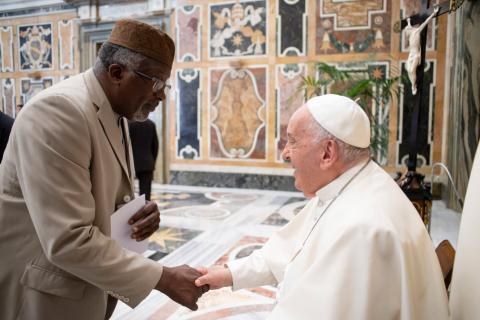How we can mark the 60th anniversary of the Church’s commitment to interreligious dialogue
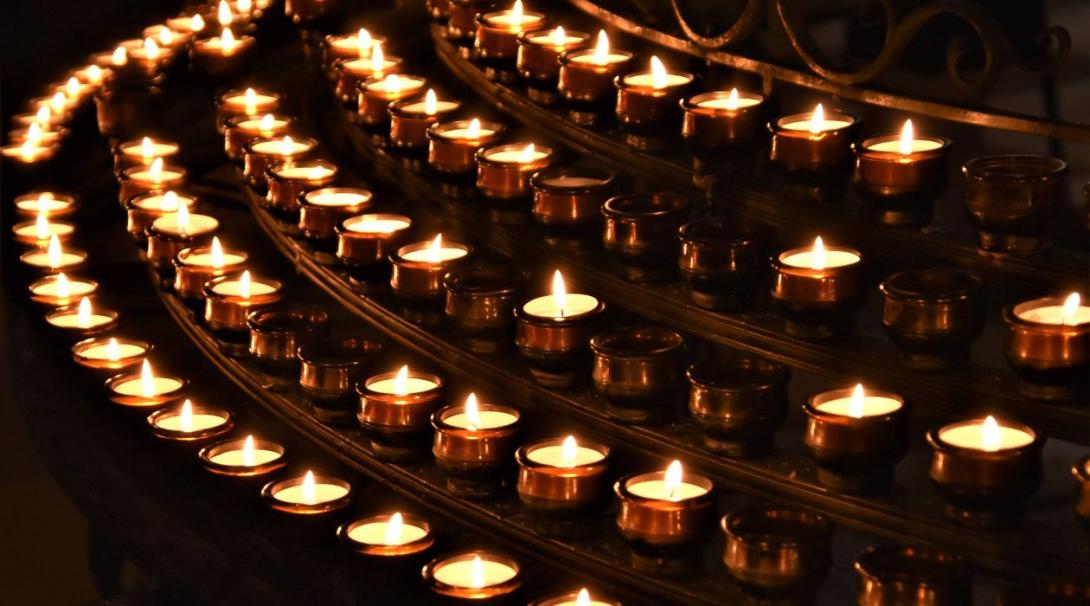
Photo by Baldemar Brandt
This fall, Catholics are marking an important anniversary in the history of the Church: the 60th anniversary of the end of the Second Vatican Council, or Vatican II. Taking place in Rome from 1962-65, the gathering brought together the world’s bishops to chart a new way forward, to open up the church to the modern world.
One of the many fruits of the council was a short declaration called Nostra aetate, which in Latin means “in our time.” In it, the Church reflected on the religious diversity of the world in light of Christian faith, seeking to define its relationship to other religions in a way that had not been done before. Though Nostra aetate is the shortest of the Vatican II documents—it is only a brief five paragraphs—it was nothing short of groundbreaking, spurring interreligious dialogue and collaboration worldwide. As a Catholic theologian who studies Islam, I have been profoundly impacted by this document; the trajectory of my own vocation would not be possible without the way it paved.
Still, the document remains largely unknown and underappreciated by many Catholics. Sixty years after Nostra aetate’s promulgation, the time is ripe to draw new attention to it, to recount some of its history, and to draw out lessons that Catholics (and indeed all people) can carry forward into the second quarter of the twenty-first century.
Speaking positively of other believers
As Nostra aetate declares at the outset, the bishops of Vatican II sought to reflect on what Catholics and those of other faiths have in common and what brings them together. This focus on similarities was a marked shift from the largely negative and oppositional approach to other religions found in past magisterial teaching. Rather than lamenting the religious diversity present in the modern world, Nostra aetate speaks of humanity as “one community” sharing a “common destiny,” and it states that the Church’s duty is to “foster unity and charity” between people.
The declaration acknowledges that throughout history, humans have sensed that we are grounded and upheld by something bigger than ourselves, and have sought out answers to perennial questions about the meaning of life, who we are, what it means to die, and how to live a good life. Nostra aetate speaks positively of the way that religious traditions have endeavored to answer these questions. The document then draws attention to specific aspects of other religions, highlighting Hinduism and Buddhism in section 2.
Judaism is dealt with at the greatest length, in section 4. The Church’s relationship with the Jewish people was the initial impetus for Nostra aetate.
Without a conversation between then-Pope John XXIII and the French Jewish historian Jules Isaac in 1960, the declaration may never have materialized. Just twenty years after the Holocaust in Europe, the Church was recognizing (and seeking to atone) for its historic antisemitism, especially the way that theological interpretations were deployed to justify the mistreatment of Jews. In Nostra aetate, the Church rejects its former teaching of contempt for Jews and the false notion that Jews should be held responsible for the death of Christ. It also draws attention to the roots of the Christian church in Judaism and indicates that God’s covenant with the Jewish people was not revoked. Forcefully condemning antisemitism, Nostra aetate encourages deeper learning, collaboration, and friendship between Christians and Jews.
During the declaration’s drafting process, the council fathers also felt it was crucial to mention Islam and forge a new way forward in the Church’s relationship with Muslims. Consequently, the declaration dedicates a section, paragraph 3, to Muslims, whom it describes as those held in “high regard” by the Church.
Nostra aetate mentions numerous things held in common by Catholics and Muslims, including worship of God, who both groups affirm to be “one, living and subsistent, merciful and almighty, the Creator of heaven and earth, who has also spoken to humanity.” Nostra aetate also points out that Muslims link their own faith back to Abraham, and that Jesus and Mary are important figures that Muslims honor and “devoutly invoke.” Islamic beliefs about the day of judgment and the resurrection of the dead are also mentioned, as well as their practices of prayer, fasting, and charitable giving.
Nostra aetate’s affirmations and statements about other religions are relatively brief, but each word was chosen carefully and purposefully. The records of the council deliberations and this history of its genesis show the complicated yet “inspired” process of the declaration’s creation, leading scholar John Borelli to consider it a “miracle” for it to have been written at all. In the sixty years since, scholars have pored over the text, seeking to understand its history and discern its implications for interreligious relations today.
What the Church says here is that Catholics can find value in other religions. There are elements of them which are “true and holy”—teachings and rituals of other faith traditions that are the locus of God’s activity.
Committing ourselves to dialogue
The word “dialogue” does not appear in Nostra aetate, but it became the buzzword to define interreligious relations in the wake of Vatican II. The document gave license to Catholics to engage positively with people of other faiths, saying in paragraph 2:
The church, therefore, urges its sons and daughter to enter with prudence and charity into discussion and collaboration with members of other religions. Let Christians, while witnessing to their own faith and way of life, acknowledge, preserve, and encourage the spiritual and moral truths found among non-Christians, together with their social life and culture.
In the last six decades, Catholics the world over—from popes and bishops to children and lay people—have joined together with people of other faiths to engage in what came to be known as the four types of interreligious dialogue. They are:
- the dialogue of theological exchange: discussions, often between scholars, about beliefs;
- the dialogue of social action: working together to help others;
- the dialogue of spiritual experience: witnessing or even participating in rituals or prayer; and
- the dialogue of life: the most ordinary yet perhaps most significant form of dialogue—simply sharing one’s joys and sorrows with those of other faiths in the context of daily living.
Nostra aetate indicates that Church’s new commitment to interreligious does not negate or conflict with its preexisting truth claims about Christ. In multiple places, the council reaffirms the Catholic teaching that saving grace comes through Christ, and thus the Church retains its “duty” to proclaim the gospel. Thus, in the wake of the council, Catholic scholars (and the Vatican) have wrestled with the coexistence of both dialogue and proclamation as integral parts to the Church’s mission, as well as the role of elements of other religious traditions in the saving plan of God.
Discovering the “true and holy” in other religions today
One of the most significant and quotable lines in Nostra aetate comes from section 2:
The Catholic Church rejects nothing of what is true and holy in these religions. It has a high regard for the manner of life and conduct, the precepts and the doctrines which, although differing in many ways from its own teaching, nevertheless often reflect a ray of that truth which enlightens all men and women…
What the Church says here is that Catholics can find value in other religions. There are elements of them which are “true and holy”—teachings and rituals of other faith traditions that are the locus of God’s activity.
Nostra aetate names some of these sites of truth and holiness in other religions. But as the passage hints at, more could be said. As Daniel Madigan has put it, Nostra aetate left a number of questions open. By focusing on similarities, the declaration refrained from mentioning many the distinctive aspects of other religions. For example, in the section on Islam, the Qur’an, which for Muslims is the Word of God, went unmentioned, as did the figure of the Prophet Muhammad. Elsewhere, very little is positively affirmed of Jewish belief and practice, and some major religions, like Sikhism, are not discussed at all. What could or should be said about them?
A task for Catholics today, sixty years after Vatican II, is to be on the lookout for all that is “true and holy” in other religions—to notice where God is at work in the spiritual lives and ethical traditions of our friends of other faiths. Each of us can likely point to examples of truth and holiness in the religions of others, even if they go unmentioned in the official text of Nostra aetate.
Standing against dehumanization and religious bigotry
The fifth and final paragraph of Nostra aetate addresses the problem of religious discrimination, drawing on scripture to remind Catholics of their duty to respect the human dignity of people of other faiths. It declares in part, “the church reproves, as foreign to the mind of Christ, any discrimination against people or ay harassment of them on the basis of their race, color, condition in life or religion.” And it reminds Catholics that the health of their relationship with God is dependent on their treatment of others: “We cannot truly pray to God the Father of all if we treat any people as other than sisters and brothers, or all are created in God’s image.”
These words are perennially important for Catholics, and indeed all people, to hear. In our own time, religious bigotry persists, fueled by stereotypes of the other and the human tendency to scapegoat others. Amid the resurgent violence in Israel-Palestine, which is often (wrongly) framed in media as a religious conflict between Jews and Muslims, it is important to learn about these stereotypes, so they don’t color our analysis of the events abroad and so they don’t fuel further harm elsewhere. One resource that seeks to aid in this task comes from the Shoulder to Shoulder Campaign, to which I contributed.
Acknowledging the past to avoid those mistakes today
The end of Nostra aetate’s paragraph on Islam acknowledges that “over the centuries many quarrels and dissensions have arisen between Christians and Muslims.” The declaration then “pleads with all to forget the past.” The passage has, understandably, been received with frustration by both Catholics and Muslims who know that their communities have been hurt by the other in the past (or present). Most interpreters of Nostra aetate agree that this passage should not be taken as license to paper over past wrongs, and I myself would argue that it’s important to actively revisit the past, even if painful, so we do not repeat it. I particularly like a theological interpretation I heard offered by Pim Valkenberg, who reads the passage as asking God to leave our sins behind. What Nostra aetate certainly does urge is that we not allow ourselves to be held back by our past sins, and that we should set aside our past animosity to forge a new, more constructive relationship going forward, to “together preserve and promote peace, liberty, social justice and moral values.”
Revisiting the history of Nostra aetate’s creation can also help us avoid misinterpreting the document today, especially as it pertains to Israel-Palestine. In the decades-long wake of Nostra aetate, some Catholics have conflated the Church's positive stance towards the Jewish people (which is expressed in Nostra aetate) with support for political Zionism. Nostra Aetate does not express support for Zionism or Israel (the declaration says it is “not moved by political reasons”), but the fact that the issue was expressed somewhat indirectly has meant that there has been misunderstanding among Catholics, including clergy and bishops. As Jesuit Fr. David Neuhaus has noted, Catholic leaders in the Middle East, who were involved in discussions that produced Nostra aetate, forecasted this problem and had requested that “a strict distinction be made between Jews and the state of Israel, which ‘must be treated according to the same criteria that govern the relations between the Church and civil societies, without any privilege or special consideration on the part of the Church.’” Subsequent teaching issued by the Vatican has clarified that Catholic approaches to the state of Israel be informed by the principles of international law.
A task for Catholics today, sixty years after Vatican II, is to be on the lookout for all that is “true and holy” in other religions—to notice where God is at work in the spiritual lives and ethical traditions of our friends of other faiths.
Holding together dialogue and social justice
Nostra aetate was not the only document issued at the end of Vatican II in 1965—several others were, too, including two important documents considered part of the body of Catholic Social Teaching. The first is Gaudium et spes, which discusses the Church in the modern world, and Dignitatis humanae, the council declaration on religious freedom. The late Jesuit scholar of the council, John O’Malley, insisted that the council documents could not be read isolation, but had to be understood together. This insight is particularly important in today’s context, where interreligious dialogue is sometimes siloed from social justice work. While talking about theology, spirituality, and ethical principles is necessary and enriching, it can sometimes be a distraction from engaging real-world injustices. At other times, the desire to maintain cordial bonds with dialogue partners has led Catholics to avoid speaking about or taking action on issues where there might be disagreement. This has sometimes been the case with Catholic-Jewish dialogue and the situation in Israel-Palestine.
Fortunately, there are many initiatives that bring diverse people of faith together to push for justice and support the vulnerable. For example, in San Diego, Bishop Michael Pham, Imam Taha Hassane, and other religious leaders gathered at the local courthouse to support immigrants threatened with detention. The clergy’s simple presence prevented numerous individuals from being taken by law enforcement. Around the world, there have also been moving interreligious demonstrations of support for justice and peace in Israel-Palestine, with Jews, Muslims, and Christians coming together to support a ceasefire and humanitarian aid in Gaza, release of Israeli hostages, and a long-term solution founded on equality and dignity for Palestinians and Israelis. In his October prayer intention video, Pope Leo highlighted interfaith collaboration for “peace, justice, and human fraternity” and prayed for their continuation.
Sixty years after Nostra aetate was promulgated, its lessons and legacy are still unfolding. In our own time, Catholics, people of other faiths and none, can be on the lookout for the “true and holy” in our midst, and as Nostra aetate says, “together preserve and promote peace, liberty, social justice and moral values.”
*The quotations from Nostra aetate used in this piece come primarily from the English translation of the conciliar documents published by Austin Flannery, OP. His translations use gender inclusive language and are phrased slightly differently from the official English translation published on the Vatican website.


